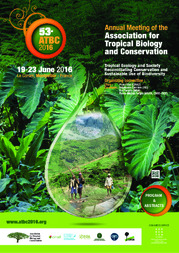Bee flora and pollen grains study for the Online Pollen Catalogue Network: basis for plantpollinator interactions research.
Bee flora and pollen grains study for the Online Pollen Catalogue Network: basis for plantpollinator interactions research.
Author(s): SILVA, C.; FREITAS, B.; BAUERMANN, S.; KLEINERT, A.; IMPERATRIZ-FONSECA, V.; MAUES, M. M.; ALBUQUERQUE, P.; NOVAIS, J.; TOLEDO, V.; BLOCHTEIN, B.; SARMENTO, E.; KRUG, C.; CURE, J.; ESTEVES, V.; MENDONÇA, C.; VIANA, B.; SANTOS, F.; SANTOS, I.; SARAIVA, A.
Publication year: 2016
Types of publication: Abstract in annals or event proceedings
Unit: Embrapa Eastern Amazon
Keywords: Abelha, Polinização, Pólen
Observation
Some of Embrapa's publications are published as ePub files. To read them, use or download one of the following free software options to your computer or mobile device. Android: Google Play Books; IOS: iBooks; Windows and Linux: Calibre.
Access other publications
Access the Agricultural Research Database (BDPA) to consult Embrapa's full library collection and records.
Visit Embrapa Bookstore to purchase books and other publications sold by Embrapa.

